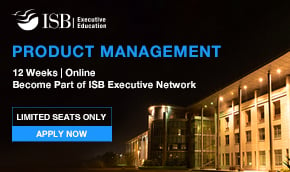A Guide to Product Development Process 2023

Product Development is a critical as well as an interesting venture. The processes included in product development are unique for individual products. However, there is a general structure of product development.
The development process needs six steps, from conceptualization to launch. The entire process involves identifying the need, researching the competition, finding a solution, developing a product roadmap and creating a minimum viable product (MVP).
Let’s keep reading this blog to learn about the product development process.
What is a Product Development Process?
The product Development Process is the operation involving a product’s conceptualization to the launch. The process starts with brainstorming for a new product; here, you need to discuss a proposed idea. From here, you will be part of the creative yet strategic steps which may be executed in a million different ways.
Depending on the type of Product and the targeted consumers, organizations take the most effective way for the process. The entire process is observed by the product development manager, who takes the initiative and directs the entire operation. Under the guidance of expert professionals, you can gain insight into “product management meaning“.
The Product Development Process can be compiled in different ways, but most organizations follow a common flow for their product. Keep reading to learn about this common flow of the development process.
Common Flows of the Product Development Plan?
The Product Development Process is commonly compiled into six stages. Successful product development requires cross-department collaboration, where teamwork and communication are at the forefront of the process.
Conceptualization
The first stage in a Product Development Process is conceptualization. In this stage, the developer brainstorms the product and predicts the final output of the product. The success of any product in completing the development process is research. More detailed the research, the more the chance of creating an effective product.
This stage includes the target market, existing product research, functionality of the product, SWOT analysis, and lastly, following the SCAMPER method for finalizing the product.
Prototyping
Depending on the concept and based on the detailed research report, a prototype of the product is created. In this prototyping stage, it is important to calculate various factors involving product development. This stage includes feasibility analysis, market risk research, development research, and the creation of the MVP.
Initial Draft
During this stage, the developer team produces a mockup of the product based on the MVP prototype. The initial draft of the product needs to be designed with the target audience in mind. Also, you need to complement the key features of the product in the initial draft.
To create an effective product design, you may need to take several iterations. It would be best if you involved distributors and communicated with them properly. To produce an initial design, you need to consider several factors, including source materials, connect with stakeholders, and receive initial feedback.
Validation and Testing
This is one of the important stages in product development. You need to validate the product before you commercialize it. For checking the validation of the product development team, analyze all the steps from development to marketing. The validation and testing stage includes checking concept development and testing, front-end testing, and test marketing.
Final Draft
After gaining the validation, the next stage involves the final drafting of the design. The final draft is created with all the features, target audience, and marketing strategy.
Commercialization
The final stage of the Product Development Process is commercialization. The thin s stage involves product launching and website implementation. Before this stage, you had already finalized the design and tested the quality of the product, and validated the marketing strategy. So now you need to work on the commercialization of the product.
You will market your physical product and develop applications and websites for marketing purposes. Also, you may need to develop additional software concepts by providing the final prototype to the team.
Now you are ready to launch the product. The Product Development team will launch the eCommerce materials in a live state. After this, you may need additional testing to ensure the functionality of the process.
Best Practices for Product Development Process
To ensure effective Product Development, there are some important practices that you need to do. Four major practices are written below.
Target Consumers
One of the major practices for an effective Product Development Process you need to understand the target audience. That means you need to research the target audience, which includes their need, desire, and demand for the existing products.
Design of Manufacturing Process
For successful Product Development, you should design the manufacturing process. This practice involves detailed reports on each and every step involved in product development.
Getting the Confidence of the Stakeholder
The Stakeholders are the people who provide the financial support for the new product. So it would help if you gained the confidence of the stakeholders by presenting the demo product with all the influential factors and predicted scenarios, which may involve product life cycle management.
If you are wondering what is product lifecycle management, it is the management of the factors involved in the growth of the products.
Doing the SWOT Analysis
Another practice that you need to do in the product development process is analyzing the SWOT of the products. This involves not only the development of the Product but the Product’s life cycle management. What is product lifecycle management? This is the managing of the various influential factors in product development.
Difference Between Developing Products at a Startup vs. a Large Business
There are many differences in product development between a startup and a large business. However, the most prominent factors are,
Finance
For a startup business developing a new product is tougher than for a large-scale business. The difficulty comes in terms of finance. Getting finance for a new product is easy for a large company, unlike a startup. A startup needs to make sure that they approach the appropriate investor and present their idea and demo products with the entire developing process.
That also involves product life cycle management. What is Product Lifecycle Management? It is the management of the different variables which influence the Product.
Involving Departments
In a large business, most of the work involved in product development is handled by the same company. But for a startup, they need to outsource most of the involved process.
Product Management Courses from Emeritus India
There’s no denying that product managers are real-world problem solvers. And this is applicable for both business and also the end user. So, if you are an aspiring product manager, you must be capable of solving critical problems. Also, possessing a firm background in problem-solving and Product Development is also immensely crucial.
Emeritus India offers some of the finest product management courses in India that help in advancing your career. Apart from that, you will also get clear insights into What is Product Lifecycle Management and Product Development Process.
Nonetheless, before you can consider becoming a product manager, it’s important that you hone your skills at the earliest. But this can only become possible only when you opt for the best product management courses in India. You will find a plethora of online product management certification programmes and courses. In a nutshell, online courses in product management combine the best of all approaches.
You learned the basics of product development in this blog; if you want to learn more about this, you can get in touch with Emeritus India.




